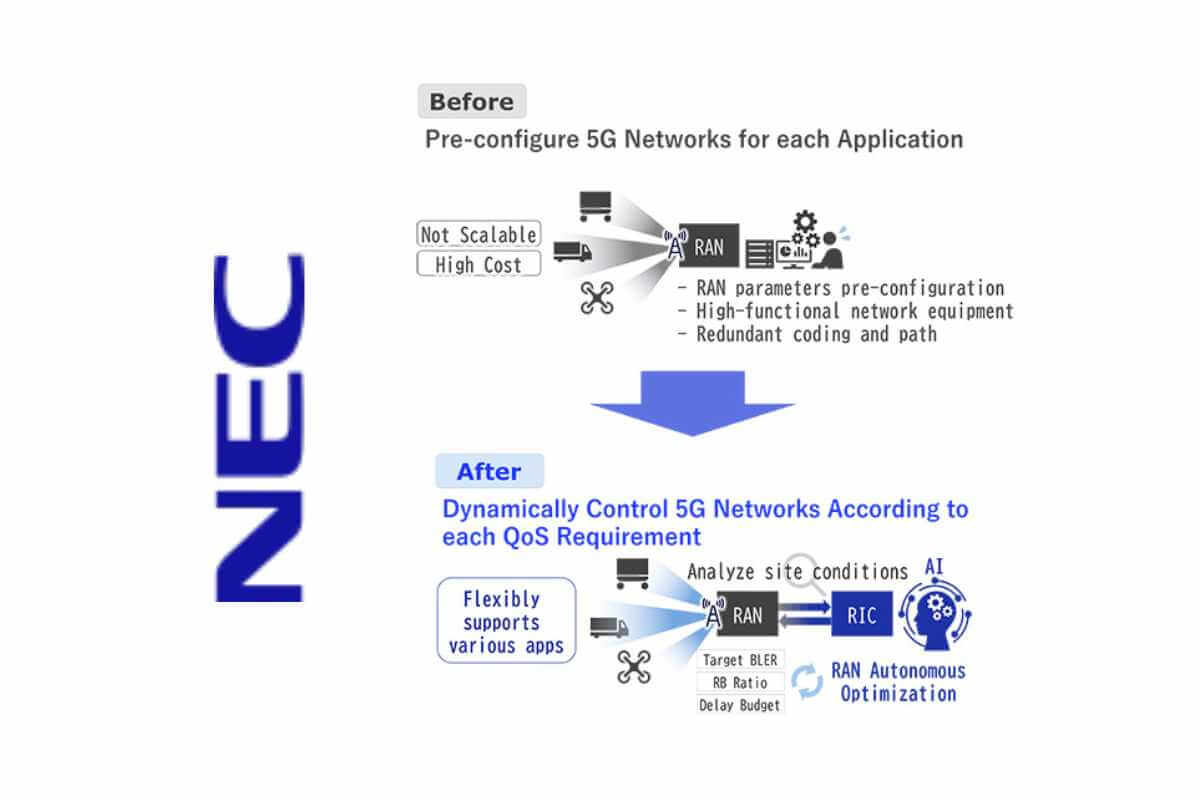
Network Technologies company NEC Corporation has announced the development of RAN autonomous optimisation technology, which dynamically controls 5G Radio Access Networks (RAN) based on the status of each user terminal, thereby enhancing the productivity of applications such as remote control of robots and vehicles. NEC plans to integrate this technology into RAN Intelligent Controllers (RIC) and conduct demonstration tests by March 2025, according to an official release on Friday.
Also Read: NEC Announces Completion of KLI Submarine Cable System for BSNL
Addressing Communication Delays
NEC said the drive for digital transformation (DX) is propelling the adoption of advanced technologies like 5G, AI, and IoT to tackle labour shortages and boost productivity. However, in remote control applications for robots and vehicles, timely two-way communication is essential. Communication delays, caused by factors like poor radio quality and congestion, have been a barrier to the introduction of remote control systems, leading to safety concerns and reduced productivity.
While current solutions involve high-performance network equipment and pre-configuration of RAN parameters according to the application, they struggle to efficiently support diverse DX applications, posing implementation challenges in terms of time and cost, the company said.
Dynamic Control for Enhanced Productivity
Reportedly, NEC's RAN autonomous optimisation technology comprises AI that analyzes communication requirements and radio quality fluctuations on a per-user terminal basis, such as robots and vehicles, and AI that dynamically adjusts RAN parameters based on this analysis.
Also Read: NEC Announces Completion of Patara-2 Submarine Cable System for Telkom Indonesia
NEC said this AI learns from past operational records of robots and vehicles and optimally controls RAN parameters such as modulation and coding scheme (target block error rate), radio resource allocation (resource block ratio), and maximum allowable delay (delay budget) while predicting the probability of exceeding communication latency requirements.
"Unlike typical 5G networks where RAN parameters are fixed for the entire network, this technology dynamically controls them on a per-user terminal basis to enhance application productivity," NEC added.
Key Features
Key features of the RAN autonomous optimisation technology include flexible support for various applications, compliance with O-RAN Alliance standards, ease of deployment, and potential productivity gains at industrial sites.















